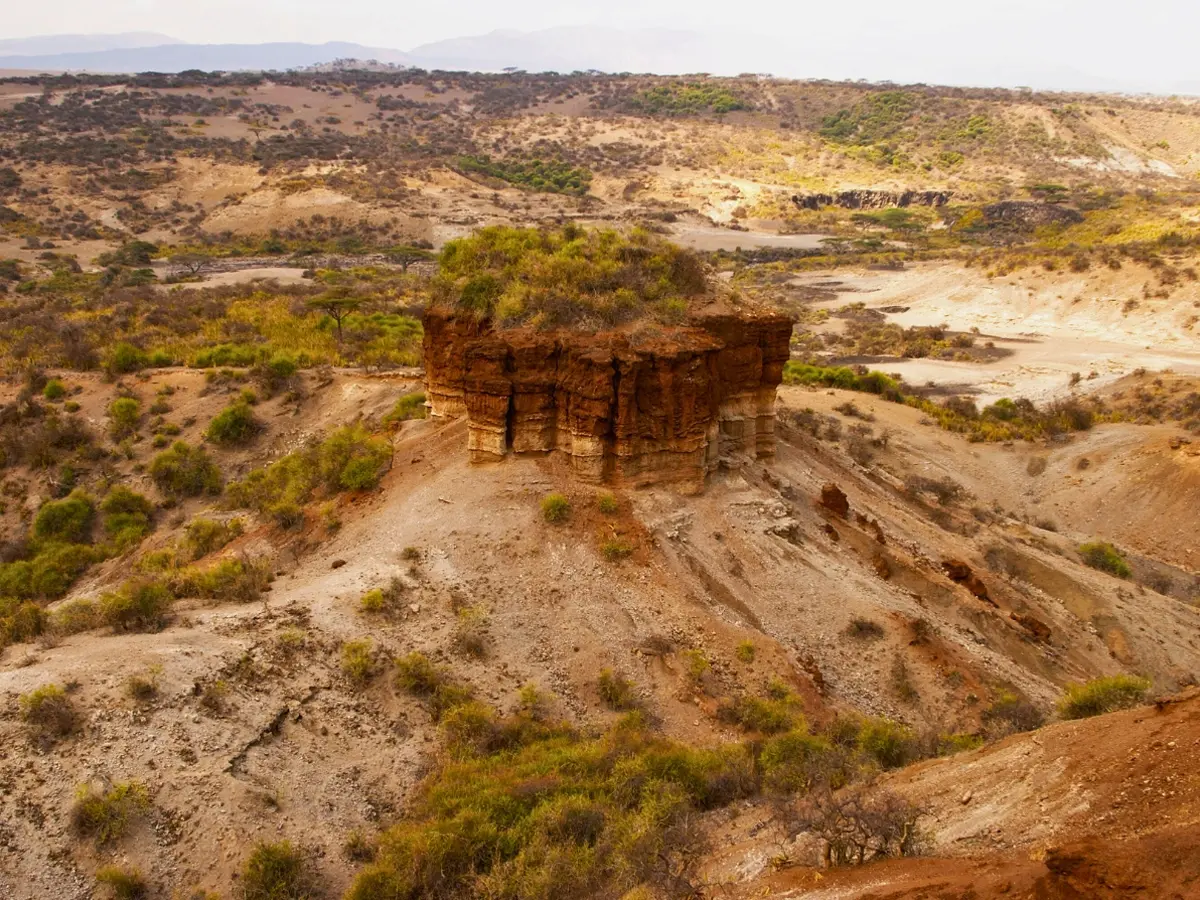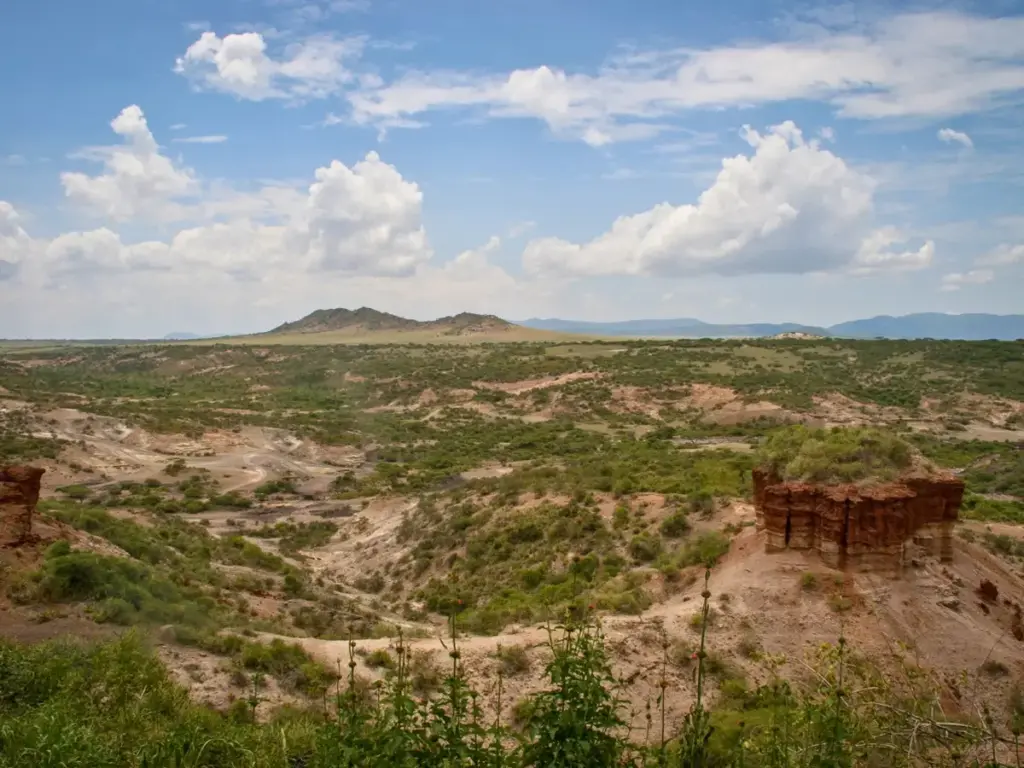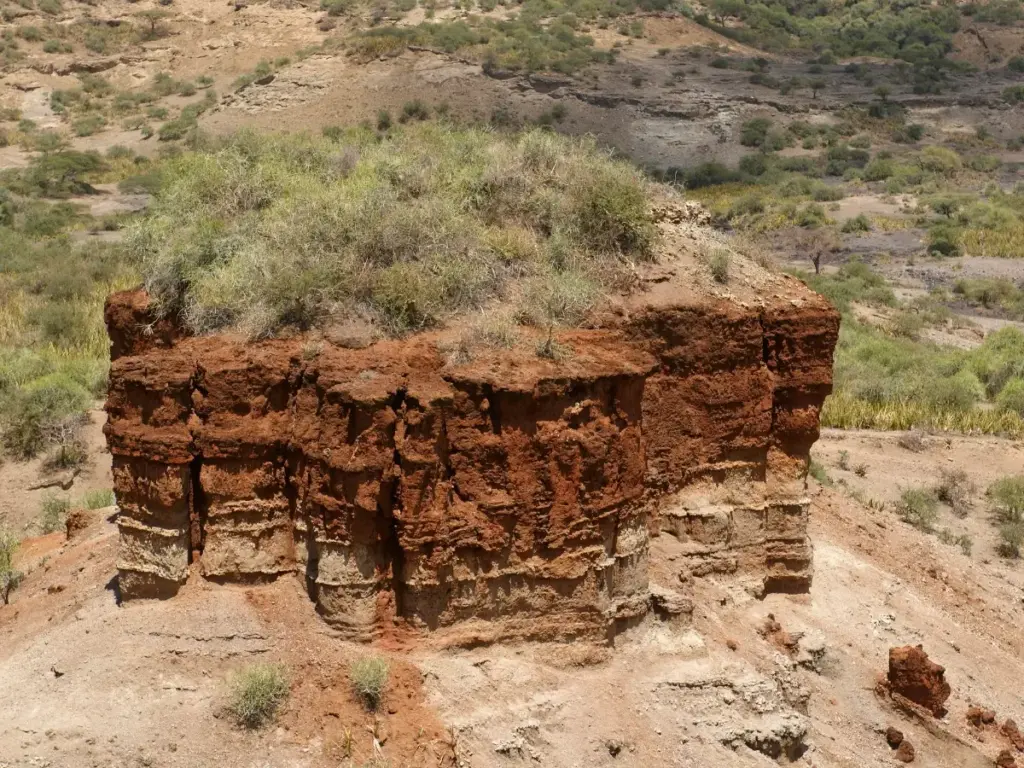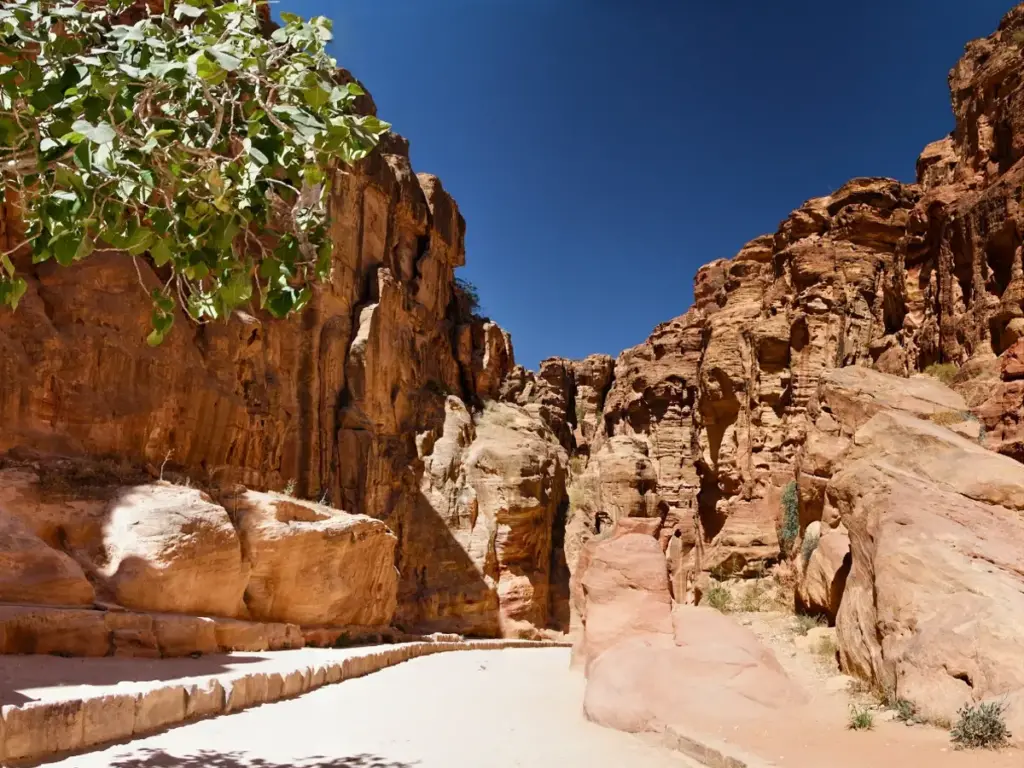
Olduvai Gorge is an archaeological site in the Great Rift Valley of Tanzania, within the boundaries of the Ngorongoro Conservation Area. It is a remarkable steep-sided ravine, stretching approximately 30 miles (48 km) in length and plunging to 295 feet (90 m) depths. The deposits along its precipitous walls show a timeline from approximately 2,100,000 to 15,000 years ago. It has yielded the remains of over 50 hominins, offering a fascinating glimpse into the ancient past. The Leakey family brought Olduvai Gorge to the forefront of scientific inquiry, unearthing fossilized remains and stone tools that have provided crucial insights into the evolution of early hominids and the development of primitive technology.
Join us as we explore the depths of Olduvai Gorge through time, deciphering the clues left behind by our distant ancestors and uncovering the mysteries that shroud the roots of humanity.

Approximately 30 million years ago, the relentless shifts of tectonic plates pulled the African continent apart, creating a series of rifts or tears in the Earth’s crust. The tectonic interplay ultimately led to the formation of the gorge. The emergence and enlargement of the Rift Valley called for subsequent volcanic activities. Over time, eruptions deposited ash and lava, forming the future gorge’s bedrock.
Olduvai Gorge holds a record of environmental changes. Sedimentary layers within the gorge reveal evidence of alternating wet and dry periods. Studies suggest that the area experienced transitions between more arid conditions and periods of increased humidity. During wetter phases, diverse plant species flourished in the region, creating a conducive environment for wildlife. Arid periods led to the contraction of vegetation, impacting the availability of resources for both flora and fauna. These variations in the environment provide valuable insights into the adaptive strategies adopted by the early hominins residing in Olduvai Gorge.
In 1910, Dr. Wilhelm Kattwinkel, a German scientist, went on an expedition to German East Africa to study Trypanosomiasis – an African Sleeping Sickness. Fate, however, had a different plan for Kattwinkel, as he stumbled upon a remarkable archaeological site brimming with ancient human bones and tools. Kattwinkel christened the site ‘Oldway’, known as ‘Olduvai’ today, and drew the attention of fellow German scientists, including Wilhelm von Branca and Hans Reck. In 1913, an expedition led by Hans Reck discovered a skeleton at Olduvai. Reck estimated its age to be a staggering 150,000 years.

The significance of Olduvai became even more pronounced after World War I when the former German colony underwent political reorganization under British rule. This prompted Louis Leakey, seizing the opportunity, to organize a new expedition to Olduvai. Upon arriving at the excavation site in September 1931, he discovered an ancient tool—a cleaver made from volcanic rock. Subsequent days saw the excavation of a collection comprising 77 similar cleavers.
Mary Leakey: Mary Leakey, Louis’s wife, discovered a fragment of an unusual bone, a part of a jaw with two teeth – posing a striking resemblance to a hominid. It was later nicknamed the Nutcracker and was eventually classified as Paranthropus boisei, with an estimated age of 1.75 million years. Her contributions encompassed discoveries at Laetoli, where she uncovered the famous hominid footprints.
Richard Leakey: Louis and Mary’s son, Richard Leakey, continued his parents’ legacy by leading numerous excavations at Olduvai Gorge. In 1960 he unearthed parts of a skeleton of Homo erectus, which is considered the direct ancestor of modern humans (Homo sapiens), as well Homo habilis. He also played a prominent role in conservation efforts and was the Director of the National Museums of Kenya.
Leakey’s archaeological discoveries in the Olduvai Gorge shed light on human evolution and coined the term “Oldowan culture” for the earliest stone-working culture on Earth. This culture is often dubbed the “pebble culture,” stretching beyond Olduvai to Kenya, Ethiopia, and even global locations like the Caucasus and Eastern Europe. The Oldowan culture signifies a pivotal step in human technological progress, originating with rudimentary stone tools made from pebbles.

Mary Leakey founded the Olduvai Museum as a hub for understanding the fossilized discoveries unearthed at Olduvai Gorge and Laetoli. The exhibits showcase different artifacts, fossils, and archaeological finds from the local region and various corners of Africa. One of the museum’s distinctive features is the sheltered viewing area that offers a panorama of Olduvai Gorge. The space also boasts an outdoor classroom where visitors can participate in lectures, presentations, and conversations with tour guides and museum curators. The presence of a community center fosters engagement and collaboration.
Venture on an Olduvai Gorge Tour with One Nature Nyaruswiga, where One Nature guides skillfully unravel the mysteries of human evolution, sharing insights into the groundbreaking discoveries made by renowned scientists like the Leakeys. Treat yourself to panoramic views of the gorge and witness the narrative come alive with vivid descriptions of the Oldowan culture.